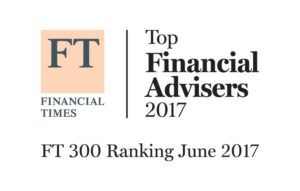Quick Links
Contact Us
Send a Message
Newsletter
We will get back to you as soon as possible.
Please try again later.
The Bond Market Corner – Summer 2020

The year 2020 started off with continued strong economic growth fueling the equity market to new highs. Bond yields remained low as inflation continued to be muted. Then the Coronavirus Pandemic hit and threw everything out of kilter. Beginning in early March the economy shut down across the US and growth fell off a cliff with equity markets completely reversing direction. Stock prices declined sharply, as much as -35%, amid extreme volatility. Bond yields plumbed new lows as the Federal Reserve took the unprecedented step of pushing short term rates to 0%. The initial reaction of the credit markets was significantly wider credit spreads in both investment grade and high yield bonds reflecting investors’ risk aversion amid the uncertainty of the pandemic. However, Congress and the Federal Reserve took aggressive and unprecedented measures to counter the economic effects of the virus. Congress passed a $2.3 trillion spending relief bill and the Fed became a lender of last resort providing funding support to many parts of the credit markets including mortgage backed securities, corporate bonds and even high yield bonds. Short term rates were cut to 0%. Essentially the Fed pledged to do whatever it takes to provide the liquidity necessary to stabilize the economy.
The result was that beginning in late March, markets staged a dramatic rebound. Stocks recovered a significant portion of their losses and credit market spreads narrowed to almost pre-crises levels. Risk markets tend to look ahead and what we are seeing is investors’ belief that as the economy slowly reopens, the recovery will be swift. However, the bond market as measured by government bond yields is not showing agreement with this view. Ten-year treasury bond yields stand at .65 % down from 1.92% at year end. Even more stark the one-year treasury is at .18%. The risks the bond market is focusing on should not be overlooked. These risks include a potential second wave, the expiration of the first stimulus package which may not be followed by further action and the outcome of the Presidential election.
Capping Government bond yields
The enormity of the stimulus package will require the issuance of a large amount of government debt. If the economy does recover and inflation were to increase, this could result in an increase in yields leading to higher government borrowing costs. For the first time since the end of World War II the Fed is considering putting a cap on government bond yields. This would be accomplished by buying whatever amount of bonds necessary to keep borrowing costs from getting above a specific range or maximum yield. Such action also known as yield curve control would be a way to ensure that the Federal Reserve and the government’s stimulus efforts are not undermined by higher yields. Other central banks such as the Bank of Japan have utilized this strategy. The risk of yield curve control is that it is taking away the natural functioning of markets by artificially setting interest rates which may adversely impact other financial markets. Artificially low yields could potentially lead to asset bubbles. Capping rates would also hurt savers even as inflation rises.
Another tool used by other central banks to boost growth is bringing short term rates into negative territory. Negative rates punish savers and reward borrowers since borrowers are now paid to borrow and savers earn little or nothing. The Fed has stated that it will not pursue a negative rate strategy. Given the level of current yields and the Fed’s stated intention that it will not pursue a negative rate strategy, we do not expect yields to decline much further. However, any increase in yields will be limited and may not occur for some time especially given the Fed’s possible use of rate caps.
In the current environment where yields may remain low for an extended period, investors should search for products that offer potentially higher returns without taking undue risks. Intermediate investment grade corporate bonds remain a good alternative as they still offer attractive yields compared to government bonds and are of high quality. By focusing on intermediate maturities, the risk from rising interest rates is minimized. Floating rate notes within a mutual fund or exchange traded fund are also a good alternative. These notes are typically issued by non-investment grade companies, are higher in the capital structure and therefore safer than high yield bonds, and their coupons will adjust higher should the Fed rates rise. High quality dividend paying stocks should also be considered. However, riskier high yield bonds should be minimized since so much is uncertain about how these companies will fare as the economy recovers. In the end investors should accept the fact that returns will be subpar for an extended period and avoid undue risks.
About The Author
James K. Ho
Jim has over thirty years of investment management experience. He is a Managing Director and Principal of the firm. Prior to West Branch Capital, Jim was a fixed income Portfolio Manager at John Hancock Advisors. Previously, he managed the John Hancock Tax Exempt Income Trust. Prior to joining John Hancock Advisors, Jim was a Senior Investment Officer at The New England (MetLife), where he managed multiple bond portfolios, including taxable and tax exempt mutual funds and separate accounts. Jim holds an M.B.A. from Columbia University, New York, as well as an M.S. in Applied Math and B.S. in Applied Math and Economics from the State University of New York at Stony Brook. He is a Chartered Financial Analyst and a member of the Boston Society of Security Analysts.
Important Links
Subscribe to our newsletter
Newsletter
Thanks for subscribing to our newsletter.
Please try again later.
Our Locations
Contact Us
Send A Message
Footer Form
We will get back to you as soon as possible.
Please try again later.
West Branch Capital was recognized by investor.com as a 2019 Trusted Firm. View our profile. To learn more about the trust algorithm, visit investor.com/trust-algorithm.
The Financial Times 300 Top Registered Investment Advisers is an independent listing produced annually by the Financial Times (June, 2017). The FT 300 is based on data gathered from RIA firms, regulatory disclosures, and the FT’s research. The listing reflected each practice’s performance in six primary areas: assets under management, asset growth, compliance record, years in existence, credentials and online accessibility. This award does not evaluate the quality of services provided to clients and is not indicative of the practice’s future performance. Neither the RIA firms nor their employees pay a fee to The Financial Times in exchange for inclusion in the FT 300.
All Rights Reserved | West Branch Capital





